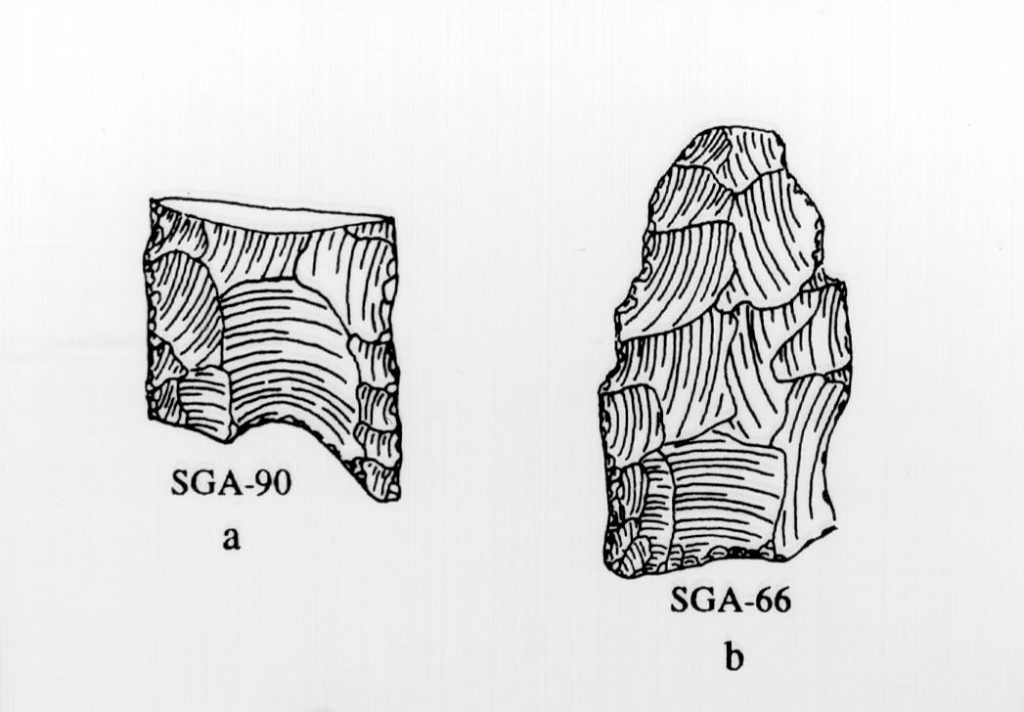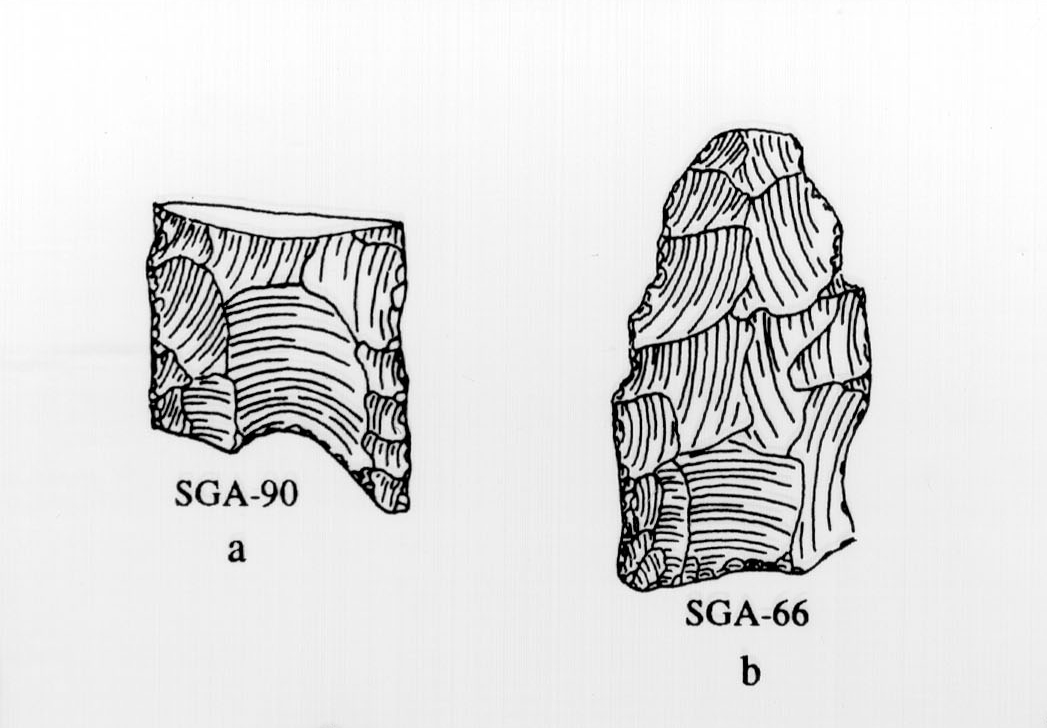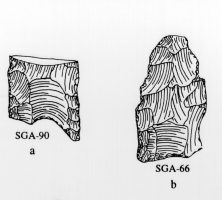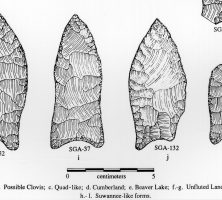Stone tips for spears and arrows have been found by the millions throughout Georgia. Such stone tips are commonly referred to as “arrowheads.” Indians were making stone spear points when they first arrived in the area about 12,000 years ago. The earliest points were the so-called Clovis points of the Paleoindian Period. Curiously, these were the most technologically complex points ever made in the state. In the following Archaic Period, a series of generally smaller points were made. These were used for spear point tips or knives but not arrow tips, which were invented much later.

Courtesy of the University of Georgia Laboratory of Archaeology
All stone points are called projectile point/knives (PPKs) by archaeologists, since it is impossible to distinguish between a stone point and a stone knife. The Early Archaic PPKs had notches placed on the sides or near the base. In the Middle Archaic Period, the PPKs had simple rounded bases with no notches, and in the Late Archaic Period, the PPKs were large and had square stems at the base.
Some archaeologists believe the bow and arrow was invented at the beginning of the Woodland Period, about 1000 B.C., when the points become much smaller. During this period some points had stems, and some were shaped like large shark teeth. Most archaeologists are certain that by the end of the Woodland Period the bow and arrow was present. The tips of the arrows were made from tiny triangular-shaped stone pieces, which were used on arrows into historic times. Historic records reveal, however, that some arrows were not tipped with stone but with bone, wood, cane, or other materials.
As with pottery, innovation in projectile point styles was quite limited at any particular time. Toolmaking skills were passed down from father to son, who worked hard to adhere to the proper pattern. Toolmaking changed gradually over hundreds of years, and no one likely saw any change in stone-tool technology during his or her lifetime.
For every fully formed PPK, probably dozens of other stone tools and hundreds (or perhaps thousands) of pieces of unused stone debris were littered in human habitations all over Georgia. These are generally not as identifiable to specific time periods by archaeologists, but they are studied in detail because they exist in such quantities; they can reveal information about past Indian societies.
Georgia is a geologically diverse state, and the stones used by regional Indians reflects that diversity. Southern Georgia is rich in chert, a brownish colored flint. Chert was often treated with heat, which made it much easier to flake and also turned its color to shades of red. Northwestern Georgia has high-quality chert of a gray to black color, while the Piedmont and Blue Ridge areas are rich in crystal and milky quartz. While not as easily worked as chert, quartz was used in great quantities by Indians in those areas. Exchange of stone across the different areas of the state was very common during some periods.

Courtesy of Ocmulgee National Monument, National Park Service










